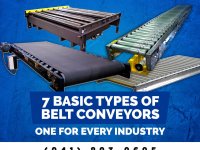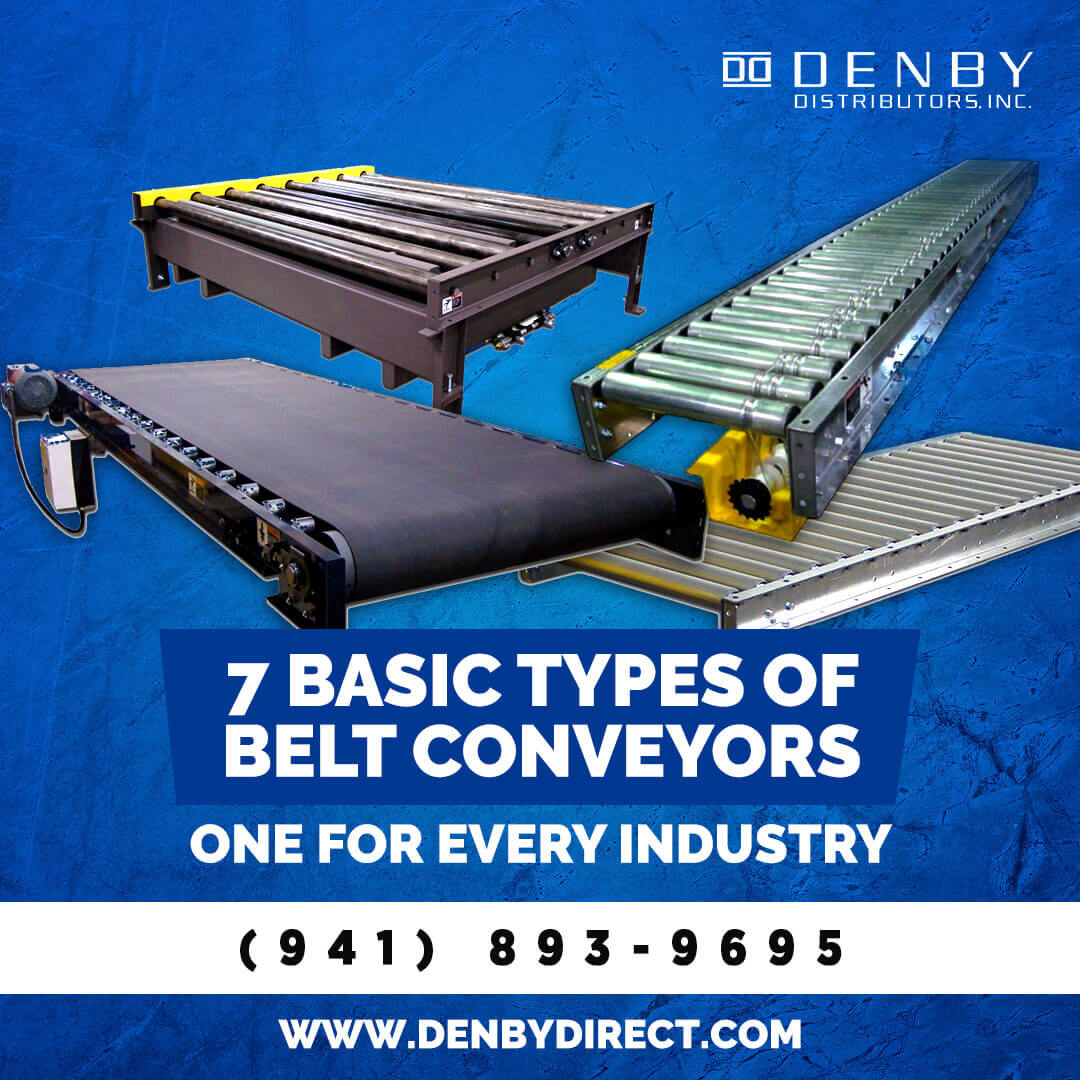Tags: Belt Conveyor, Gravity Conveyor, Best Gravity Conveyor Models, Conveyor Slave, Aluminum Gravity Conveyor
Are you building a factory line or redesigning your manufacturing process? There are a number of belts available on the market, and each of them suits a number of needs. Finding the correct one is essential to increase your workflow and productivity.
A conveyor belt is a sound investment if you want to speed up production. Below, we discuss the 7 main conveyor belt types in our must-know guide.
1. Flat Belt Conveyor Belt
Flat belt conveyor systems are extremely versatile. They use a system of powered pulleys. These pulleys propel the flat belt forward, moving the goods to the desired location.
Belts can be made from a number of substances, both natural and synthetic. You will usually find them inside factories and buildings, as they do not wear well when outdoors.
These types of belts are used in slow assembly lines, wash down areas, and industrial environments. As the material on the belt can change to suit the needs of the owner, it is possible to customize them with a range of options for different needs.
2. Roller Bed Conveyor Belt
A roller conveyor belt does exactly as the name implies and uses a series of conveyor rollers to move items along a belt. The rollers adjust to match the weight and speed of items that will need to be moved. The shorter the conveyor belt is, the fewer rollers are in its construction.
Roller bed conveyors have a number of benefits. They reduce friction, so they are great for transporting items over a long distance.
They tend to feature in processes that require gravity for loading. This is because manual operations can sometimes cause shock, damaging the rollers. This makes them a great choice when assembling, packing, inspecting, and transporting items.
3. Modular Belt Conveyors
Modular conveyor belts have a very different belt to the flat belt and roller beds. Where these use one long piece of material to move products along, modular belts use a series of interlocking plastic pieces. These hard plastic sections can remove easily if they damage, or can be washed and replaced.
As their construction is from hard plastic, the belt is very durable and is less prone to wear and tear like other belts. As such, they have easy methods of repair and maintenance.
Another desirable factor is its maneuverability. They can turn and sweep around corners, meaning processes do not have to operate in a straight line. As they can also incline and decline, they can also make better use of floor space.
They are often found transporting food because of their sanitary nature and the ease with which they clean. The plastic spacing can adjust, meaning fluids and unwanted materials can be easily brushed aside.
4. Cleated Belt Conveyors
A cleated belt is one that has a vertical barrier along its length. These are ideal for segmenting smaller items and goods into sections. They support them as they move up inclines and declines, preventing them from spilling onto the floor.
These barriers can be customized to serve a number of purposes, as can changes to the belt itself. Belt types can include wire or fiberglass mesh for extreme temperatures. You can also add chains and metal tops for handling aggressive parts.
The amount of different cleat type is vast. Some are known as forward-leaning L cleats and can scoop up small amounts and items as they move. Inverted V cleats are designed for moving very heavy, abrasive goods as they can withstand large impacts. Inverted capital T cleats are used for lighter goods.
5. Curved Belt Conveyors
Curved belt conveyors use a belt to transport goods around corners and tight curves. They can help make better use of floor space and are very useful in smaller factories or manufacturing facilities. Curves can be as much as 180 degrees.
Curved conveyors differ from the movement of modular belts, as they are fully curved. Modular conveyor belts require straight runs before and after their curved belts to operate.
6. Incline and Decline Conveyors
These belts can carry goods up and down in a production line. They consist of a center drive, gear motor, and a single or double nose take up. The belt will often have a rough-textured surface to create grip between its surface and the items it is carrying up or down.
Depending upon the angle at which they convey goods, they may also need to use a cleated belt. This adds another dimension that will keep the products from rolling off the line. They are useful for assisting in gravity flow systems, as well as transporting goods to elevated positions.
7. Washdown and Sanitary Conveyors
Food and pharmaceutical industries often require high levels of sterilization and washing in their processes. To help facilitate safety guidelines and standards, the surfaces of these conveyors are designed for durability that withstands these procedures. Belts on these machines will often be flat wire belts, making them easy to wash and clean.
With wire belts, they are often capable of moving goods that are extreme in temperature. With the ability to handle wet and greasy items, they can handle multiple food processes like glazing or the addition of hot oil, as well as larger industrial applications like the moval of oil drums and shipping goods.
Get a Profesional Opinion
Once you have an idea of the conveyor belt you will need, get a professional opinion. An expert will know the best belts and systems for your operation and advise on how you can increase space use and production.
Denby Direct are experienced, expert providers of tools and conveyors for the manufacturing industry. We can provide ready to order devices or create custom orders for all your needs. Contact us today, and get free shipping on orders over $300.




